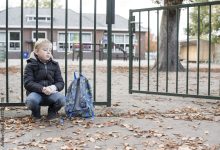Encouraging School Attendance for Kids Living in Out of Home Care
Children who live in out-of-home care are more likely to miss out on school and less likely to complete Year 12. A new study is working towards finding out why.

Just under 1 per cent of Australian kids live in out-of-home care, or around 8 in every 1,000 children. According to the Australian Institute of Health and Welfare, most of these 46,000 children are on a care and protection order after experiencing abuse or neglect at home, and two-thirds had been in the system for two or more years.
Compounding the issues they have already experienced, children who live in out-of-home care are more likely to miss out on school and just over half will complete Year 12 compared to the national average of 85 per cent.
Finding answers
A new study approved by the Australian Research Council (ARC) will see nine care organisations and four universities collaborate to understand why these children have higher absentee rates and develop a child-focussed framework that works towards solving the problem.
Led by the University of Tasmania, the research group also includes The Australian National University, Australian Catholic University and University of South Australia, CREATE Foundation, Life Without Barriers; Berry Street; Stronger Smarter Institute; Allambi Care; Anglicare; Key Assets Australia; MacKillop Family Services; Commissioner for Children and Young People Tasmania.
By uncovering the full range of factors and difficulties that can lead to school absences, the research team will then develop practical solutions and systems to improve attendance. CREATE Foundation is one of the participating organisations, a national consumer and advocacy body representing the voices of children and young people with an out-of-home care experience.
“This study will contribute to maximising educational outcomes by minimising barriers and disruptions to attendance that can impede a successful educational experience. CREATE’s aim is for young people in care to reach their full potential. Having a comprehensive education is an important start. Before young people can reach higher aspirational goals, they must participate in and complete their basic schooling.” CREATE Foundation Executive Director of Research, Dr Joseph McDowall
Policy is constantly being developed to support and protect children in care including the Federal Government’s National Standards for Out-of-Home Care and the National Framework for Protecting Australia’s Children. This new collaborative ARC study will add to the body of knowledge with multiple streams of research including case studies and speaking directly with children, auditing policy and investigating absence data.
What can schools do to help?
While there are some regional differences, most states offer students who live in out-of-school care a personalised learning and support plan. This can include an Individual Education Plan, assessing and providing support for behavioural and social-emotional needs, and provision of a mentor or designated teacher.
Training teachers and staff in trauma awareness, learning differences and self-regulation difficulties is another way schools can support students living out of home.
But despite the programs on offer, these already vulnerable children are still missing out on a significant amount of their education. It is not the fault of individual schools, foster families or care homes nor the children themselves but indicative of a larger, systemic issue.
The long-term effect of being in out-of-home care
All students can experience challenges in regular school attendance, but for children living out of home – sometimes moving between care homes and foster or kinship families, as well as attending multiple schools over the course of their schooling, there are additional obstacles.
CREATE Foundation reports that 36 per cent of children in care do not live with any of their siblings, that 35 per cent will have five or more caseworkers during their time in care and that young people in out-of-home care are 16 times more likely to be under a youth justice order than the general population. At the same time, their research also shows that for many young people in care, school is seen as a reliable and safe constant during difficult times, and they want to go to school.
Therefore, one outcome of the study will be conceptualising the gap between this desire to attend school and the reality of absenteeism. It will provide an evidence-based, child-centred framework to enable attendance and improve educational outcomes which will provide significant social and economic benefits both for children in care and the entire community.







